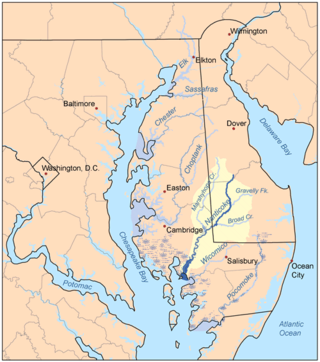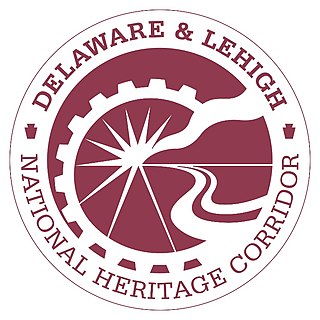
Lehigh County is a county in the Commonwealth of Pennsylvania. As of the 2020 census, the county's population was 374,557. Its county seat is Allentown, the state's third-largest city after Philadelphia and Pittsburgh.

Allentown is a city in and the county seat of Lehigh County, Pennsylvania, United States. It is the third-most-populous city in Pennsylvania with a population of 125,845 as of the 2020 census and the largest city in the Lehigh Valley metropolitan area, which had a population of 861,899 and was the 68th-most populous metropolitan area in the United States as of 2020.

Lower Macungie Township is a township in Lehigh County, Pennsylvania. The township's population was 31,964 as of the 2020 census, making it the second-largest population center in Lehigh County after Allentown and the third-largest population center in the Lehigh Valley metropolitan area after Allentown and Bethlehem.

The Lenape, also called the Lenni Lenape and Delaware people, are an indigenous people of the Northeastern Woodlands, who live in the United States and Canada.

Lenapehoking is widely translated as 'homelands of the Lenape', which in the 16th and 17th centuries, ranged along the Eastern seaboard from western Connecticut to Delaware, and encompassed the territory adjacent to the Delaware and lower Hudson river valleys, and the territory between them.

The Walking Purchase, also known as the Walking Treaty, was a 1737 agreement between the Penn family, the original proprietors of the Province of Pennsylvania, later the Commonwealth of Pennsylvania, and the Lenape native Indians. In the purchase, the Penn family and proprietors claimed that a 1686 treaty with the Lenape ceded an area of 1,200,000 acres (4,860 km2) in present-day Lehigh Valley and Northeastern Pennsylvania, which included a western land boundary extending as far west as a man could walk in a day and a half, which led to its name.

America on Wheels is an over-the-road transportation museum in Allentown, Pennsylvania.

The Nanticoke people are a Native American Algonquian people, whose traditional homelands are in Chesapeake Bay and Delaware. Today they live in the Northeastern United States and Canada, especially Delaware; in Ontario; and in Oklahoma.

The Unalachtigo were a purported division of the Lenape, a Native American tribe whose homeland Lenapehoking was in what is today the Northeastern United States. They were part of the Forks Indians.
The Nanticoke Lenni-Lenape Tribal Nation are a tribal confederation of Nanticoke of the Delmarva Peninsula and the Lenape of southern New Jersey and northern Delaware. They are recognized by the state of New Jersey, having reorganized and maintained elected governments since the 1970s. They are not a federally recognized tribe.

Lehigh Parkway is a large, 629-acre public park along the Little Lehigh Creek in Allentown, Pennsylvania in the Lehigh Valley region of eastern Pennsylvania. It is the most prominent park in the city and follows the Little Lehigh Creek southward for three miles from center city Allentown to Cedar Crest Boulevard in neighboring Emmaus.

The Delaware & Lehigh Canal National and State Heritage Corridor (D&L) is a 165-mile (266 km) National Heritage Area in eastern Pennsylvania in the United States. It stretches from north to south, across five counties and over one hundred municipalities. It follows the historic routes of the Lehigh and Susquehanna Railroad, Lehigh Valley Railroad, the Lehigh Navigation, Lehigh Canal, and the Delaware Canal, from Bristol northeast of Philadelphia to Wilkes-Barre in the northeastern part of the state.

The Johnson-Humrickhouse Museum is a general interest museum within historic Roscoe Village, a restored Ohio & Erie Canal town in Coshocton, OH. It has four permanent themed exhibits within five galleries, including a Native American Gallery, Historic Ohio, Asian, and 19th and 20th Century Decorative Arts. There are more than 17,000 items in its collections.

Minisink Archeological Site, also known as Minisink Historic District, is an archeological site of 1320 acres located in both Sussex County, New Jersey and Pike County, Pennsylvania. It was part of a region occupied by Munsee-speaking Lenape that extended from southern New York across northern New Jersey to northeastern Pennsylvania. The Munsee were speakers of one of the three major language dialects of the Lenape Native American tribe. This interstate territory became the most important Munsee community for the majority of the 17th and 18th centuries.

Lehigh County Historical Society is a nonprofit organization, founded in 1904, dedicated to collecting, preserving, and exhibiting the history of Lehigh County, Pennsylvania and the Lehigh Valley region of eastern Pennsylvania. The Historical Society and Lehigh Valley Heritage Museum are located at 432 West Walnut Street in Allentown.

The culture of Allentown, Pennsylvania dates back to the settlement of the city and the surrounding Lehigh Valley in the early 1700s by Germans of the Protestant Lutheran, Moravian, and Reformed faiths, who fled religious persecution and war in Europe to settle in Allentown and its surrounding towns and communities. Before their arrival, the region had been historically inhabited by Lenape Native American tribes.
The Franklin Mineral Museum in Franklin, New Jersey is a mineral, geology, and mining museum at the former Franklin Mine. It is located in Sussex County, New Jersey.
Powder Valley is a village in southern Upper Milford Township in Lehigh County, Pennsylvania. Powder Valley is part of the Lehigh Valley, which has a population of 861,899 and is the 68th-most populous metropolitan area in the U.S. as of the 2020 census.

The Whitehall Parkway is a 110-acre park situated near the center of Whitehall Township, Pennsylvania in the Lehigh Valley region of eastern Pennsylvania. The parkway serves as a preserved green space in the center of the Township after the Township government acquired the property in 1990 and sought to preserve a mix of Whitehall's history, spanning from early settlers to recent cement and mining companies centered on the Coplay Creek, a tributary of the area's Lehigh River.

The National Museum of Industrial History, abbreviated NMIH, housed in the former facility of Bethlehem Steel in Bethlehem, Pennsylvania, is a museum affiliated with the Smithsonian Institution that seeks to preserve, educate, and display the industrial history of the nation. It holds a collection of artifacts from the textile, steel and iron, and propane gas industries. The NMIH holds a significant collection of industrial machinery on loan from the institute's National Museum of American History. The museum also has a large collection of documents, machinery, photographs, and other archival material from Bethlehem Steel, one of the world's largest steel manufacturers prior to its 2001 bankruptcy and 2003 dissolution.















